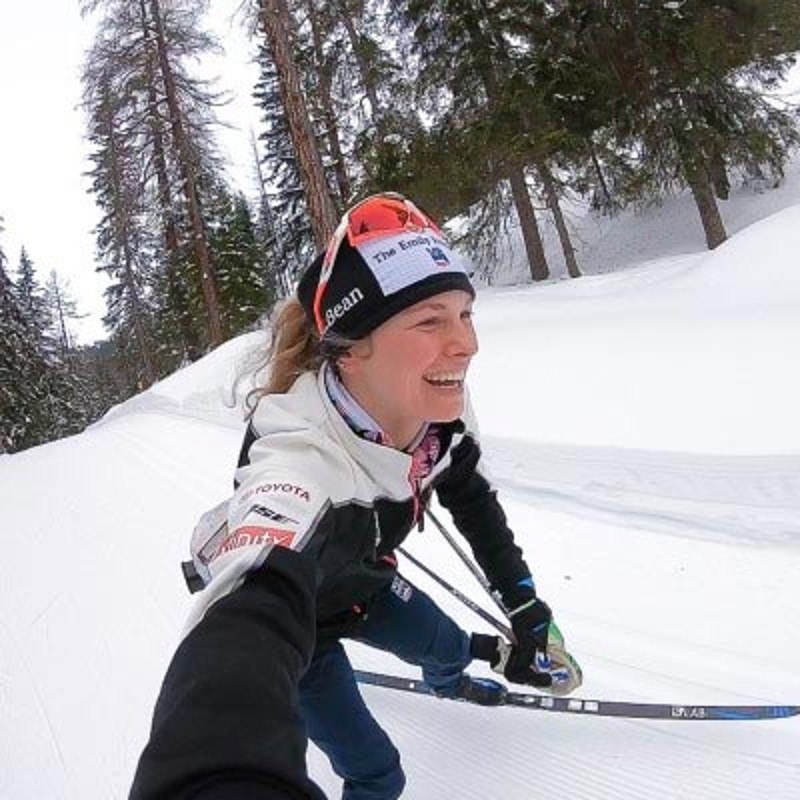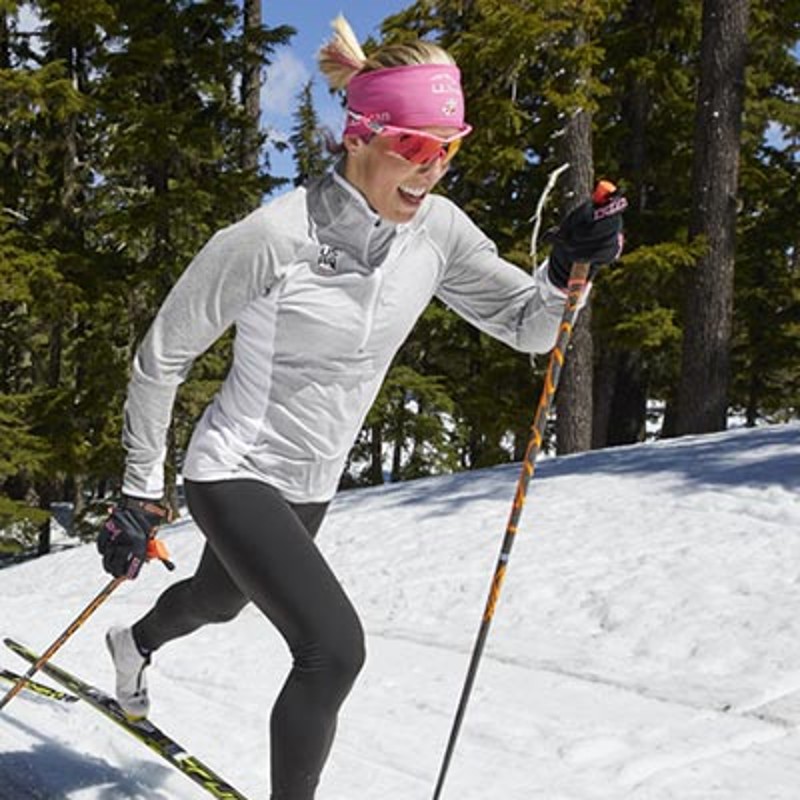
1. Choose the Right Skis
TOURING
Touring skis are narrow, lightweight and maneuverable for smooth skiing in groomed tracks. Designed for touring centers where trails are machine-groomed so you always have a smooth track to ski in, they can also be used in backyards and fields that are relatively flat and easy to navigate. Our touring skis feature a user-friendly shape and an easy-to-use waxless design. They also have a bit shorter length to enhance maneuverability and control for increased confidence. They’re a great option for beginners or if you just want to get some exercise.
BACKCOUNTRY
The term “backcountry” can mean different things to different people. To some, it’s skiing a loop in the woods behind your house for a couple hours. To others, it’s hauling a sled full of gear deep into the wilderness for days of winter camping in challenging, technical terrain. They are definitely not a ski you would bring to a touring center with groomed trails.
Backcountry skis are wider for better flotation and stability on deep snow and steeper terrain. They’re equipped with full-length metal edges that provide excellent control on downhills and icy conditions. Their shape allows for better turning ability and a waxless, maintenance-free base provides confident grip in all snow types.
2. Getting the Right Boots
TOURING
Touring boots are lightweight, flexible and feature a narrower base that’s designed for the bindings found on touring skis. They’re usually equipped with heat-molded, adjustable liners that provide a custom fit to your feet. Locking lace systems offer fast on/off and extra support. Hinged cuffs allow a natural stride and good range of motion. A bit of insulation adds extra warmth.
BACKCOUNTRY
These boots feature a wider, more stable base that’s designed to clip into beefy backcountry ski bindings. A stiff sole and higher cut design provide extra support for turning. They offer excellent stability and control for navigating steep and icy conditions. They have more insulation than touring boots to help keep your feet warm in demanding conditions.
3. Find the Right Ski Poles
For touring, you want poles that reach up to about your armpits. In the backcountry, the length of poles depends on what kind of terrain you’re skiing. Adjustable multi-piece poles are ideal for backcountry skiing. On flat or slightly rolling ground, you’ll size them just like touring poles. If you venture into more rugged terrain with steeper climbs and sharper drops, you’ll want to shorten them a bit.
SHOP SKI POLES4. Stay Warm and Dry with the Right Outerwear and Layers
Keeping warm and comfortable can be tricky while skiing. Often it’s quite cold when you start so you’re tempted to wear your warmest gear. The problem arises when you’ve been skiing for a little while and start to generate some body heat. With your warmest clothes already on, it’s easy to overheat and perspire enough to soak your inner layers. A better strategy is to start with lighter apparel, maybe just a base layer and an outer shell, so you won’t overheat. Although you might feel a little chilled at first, you should quickly warm up but not to the point of soaking your clothes with sweat.

BASE LAYERS
To keep warm, it’s important to wear the proper layers. Base layers are worn next to your skin for insulation, breathability and moisture wicking. They are made of synthetic fabrics or natural materials like wool or silk. Never wear cotton, it doesn’t move moisture away from your skin and provides no warmth when wet. Base layers are available in different weights to accommodate different weather conditions.
MID-LAYERS AND OUTERWEAR
Worn over your base layer, these consist of fleece jackets, wool sweaters, warm winter jackets and weatherproof shells. If it’s not cold enough to require one of these layers while skiing, it’s still a good idea to have a warm jacket in your pack for breaks and lunch stops.
GLOVES, HATS AND SOCKS
Warm, waterproof gloves seal out weather and help you enjoy each outing to the fullest. Thin wool liner gloves are also a good idea and can be worn alone on milder days. To finish your skiing outfit, good thick socks and a toasty hat will preserve your precious body heat. And remember to carry spares of each in your pack in case you get wet.
Gloves & Mittens
Socks
SUNGLASSES
You’ll need to protect your eyes from the sun reflecting harshly off the snow. A good pair of polarized sunglasses that wrap around your face is the best choice. A hat with a brim will also block the sun’s strong rays.

5. What Do You Need to Pack?
Bring a pack along so you can carry a few necessities. These include: snacks, food and water; extra layers; extra gloves, hat and socks; first aid kit; and toe and hand warmers. Your pack is also a great place to put layers you shed as you warm up. Always bring a headlamp in case you end up staying out longer than expected.
6. Tips and Helpful Hacks
Here are a few tips to help you have fun, stay comfortable and be safe.
- Put some hot dogs in a thermos of very hot water first thing in the morning and by lunch you’ll have some tasty cooked dogs.
- Bring a thermos of hot cocoa or tea so you’ll always have a hot drink on the trail.
- Attach a toe warmer to the back of your phone to keep it warm and preserve its battery life.
- Always leave a note behind with where you’re going and how long you expect to be out.
- Leave water, food and a dry change of clothes in your car for when you return.
- Bring some duct tape rolled around a pen or pencil, it’s a great quick fix for everything from a broken pole to faulty bindings.
- Plan ahead by mapping out a trail behind your house before the snow flies. That way, you can pick the best route through the woods.





